Deciding on the best indoor cycling setup for your needs can be a head-scratching task. You’ll want to consider space and price, but most importantly which indoor cycling solution is best for your needs.
Each device has its advantages, which can make it tricky to reach a decision. For example, you may want the convenience of a static trainer or to ride your bike indoors with a smart trainer. Alternatively, you might want bike rollers, which go some way to replicate riding outdoors.
Fortunately, we’re here to explain what you need to know about the different options and to find the right indoor cycling setup for you.
What are bike rollers?
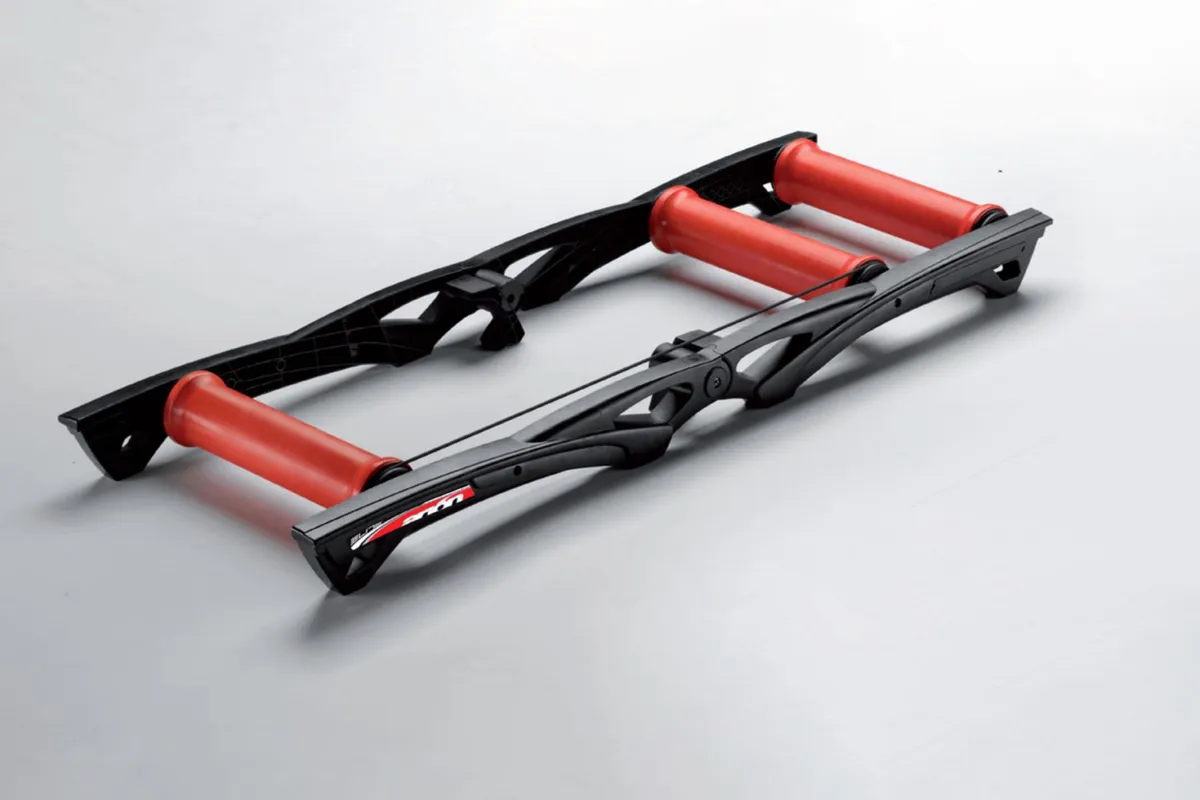
Bike rollers are best thought of as a treadmill for a bike.
Rollers essentially consist of three drums bolted onto a solid rectangular frame that sits on the floor. Your rear wheel drives the back pair of rollers that in turn drive the front one via a belt or very strong elastic band.
Unlike a turbo trainer, you actually ‘ride’ on top of rollers, so there’s an element of balance and skill involved. If you struggle with holding a line or retrieving food or a bottle from its cage, then spending some time on them is bound to help.
The skill required to ride rollers can make them a little more engaging to use than a turbo, and there are some unique training benefits.
In particular, high-cadence workouts on rollers are a perfect platform to develop a smooth pedalling technique, and many pro riders will spend the winter on rollers working on just this.

Unlike a turbo trainer, you can also just jump straight onto a set of rollers on any bike and get right into punishing yourself.
This makes them a popular choice for pre-race warm-ups, and the hum of a zillion rollers in a car park is a common spectacle at many events.
Despite being a relatively simple thing, rollers have come on in recent years, with better bearings making for a smoother ride and smaller rollers making it easier to get up to speed.
Many rollers are now also concave-shaped (they slope towards the middle), making it much easier to stay in place.
The majority of rollers have a fixed level of resistance, so if it’s out-and-out power you want to work on, it might be best to look at a turbo or smart trainer.
Most rollers are fairly low-tech, but they are still compatible with apps such as Zwift as long as your bike has at least a cadence and speed sensor.
What is a turbo trainer for indoor cycling?
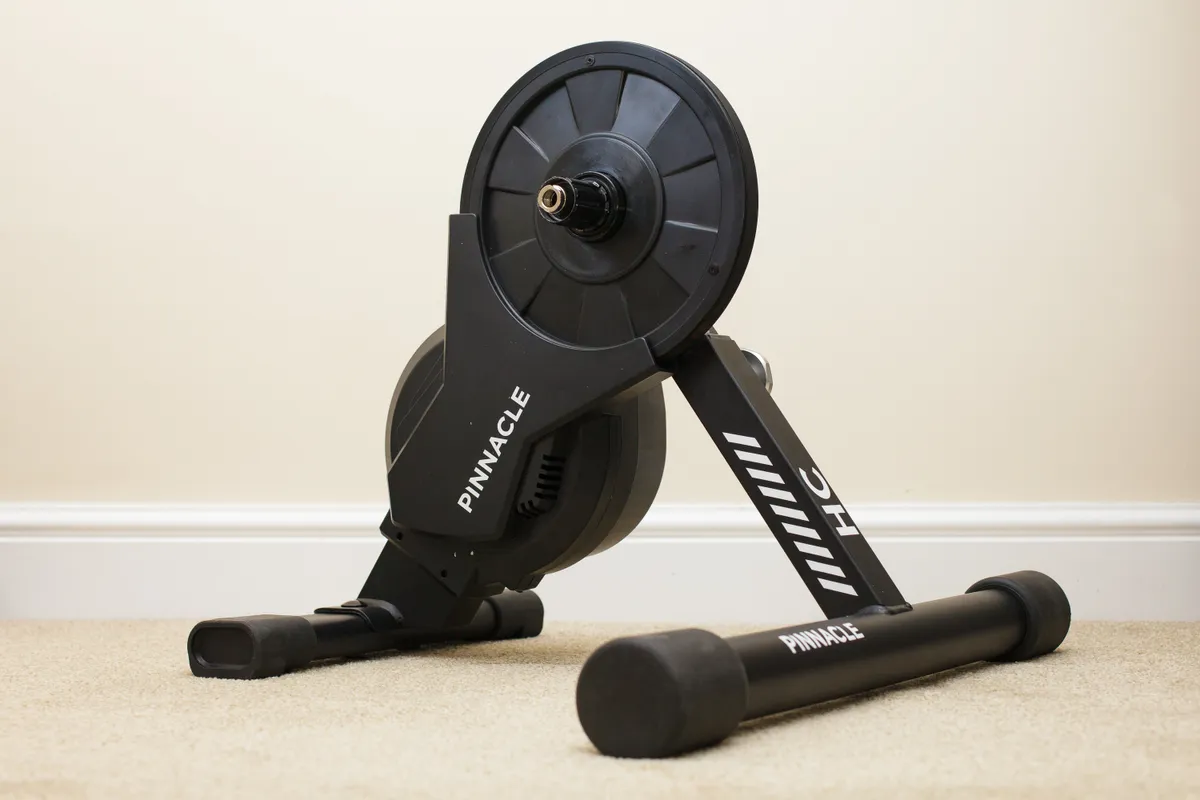
Turbo trainers clamp the rear of a bike into a static stand and there are two different types: wheel-on turbo trainers and direct-drive turbo trainers.
Wheel-on turbo trainers
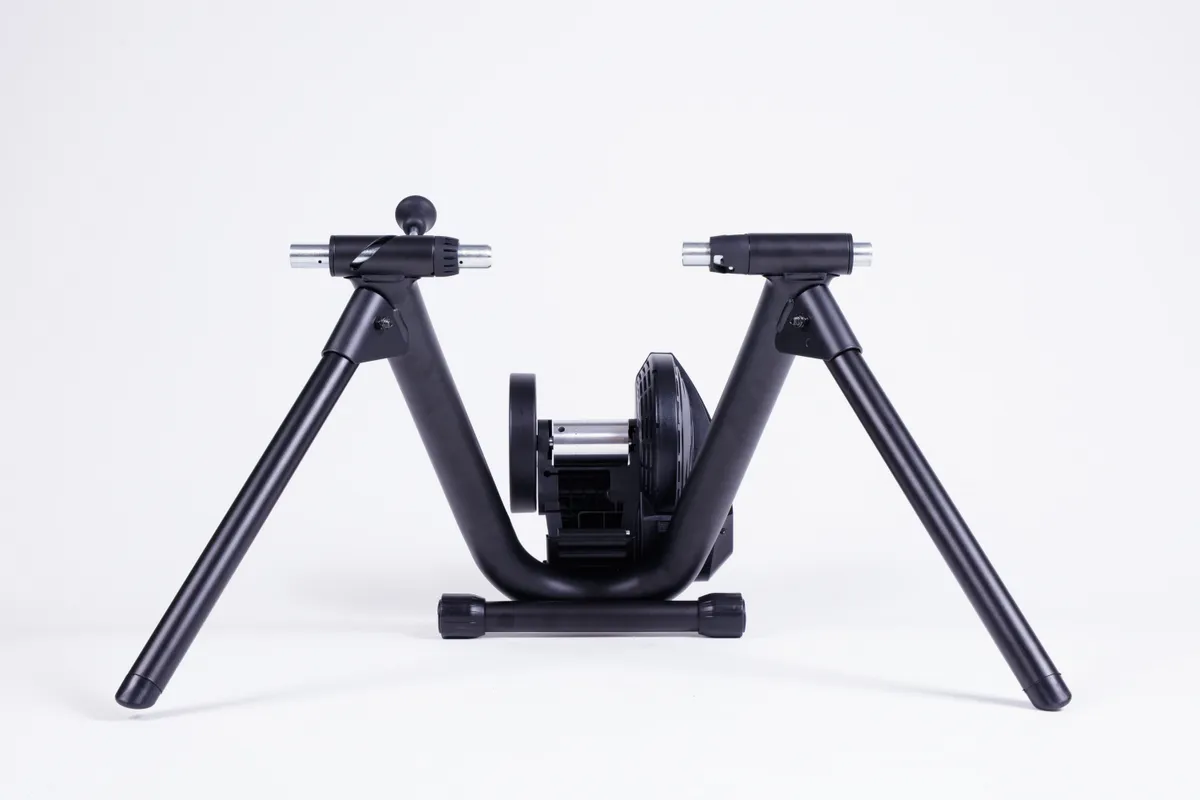
A wheel-on turbo trainer uses the tyre of a bike, usually rolling on a metal or composite drum, to drive the trainer.
After clamping the bike into the turbo trainer, a dial can be used to finely adjust how hard the roller presses against your bike wheel.
It’s recommended by most turbo trainer manufacturers that you use a special hard-compound tyre that’s less resistant to wear and heat build-up on a turbo trainer. Turbo trainer tyres cannot be used on the road.
Direct-drive turbo trainers
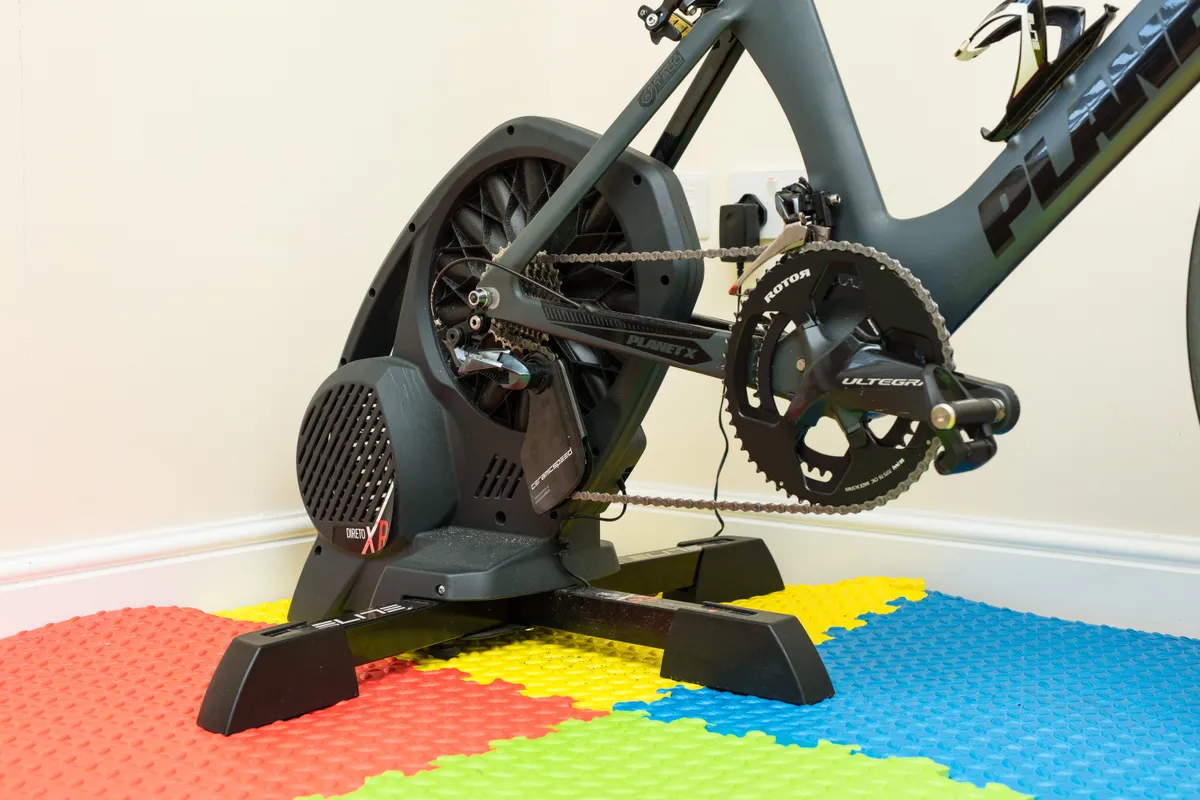
Direct-drive turbo trainers replace the rear wheel of the bike, sitting between the dropouts and clamped in place with a quick-release skewer or thru-axle. Just like a wheel, a direct-drive turbo is driven by a cassette.
Direct-drive turbo trainers tend to be quieter because there’s no tyre/roller noise, more stable, and offer greater levels of resistance than regular turbo trainers. They do tend to cost a bit more, though.
There are numerous ways in which resistance is produced on a turbo, ranging from heavy flywheels on the simplest models to fans.
The very cheapest turbo trainers have a fixed level of resistance but, as price increases, you’ll gain features such as remote resistance control, power meters and smart features.
You’ll still be able to complete HIIT workouts and other turbo training sessions, regardless of price or extra features.
It’s normally recommended that you use a wheel block in conjunction with a turbo trainer to raise the front of the bike up to its normal height.
What is a smart trainer?
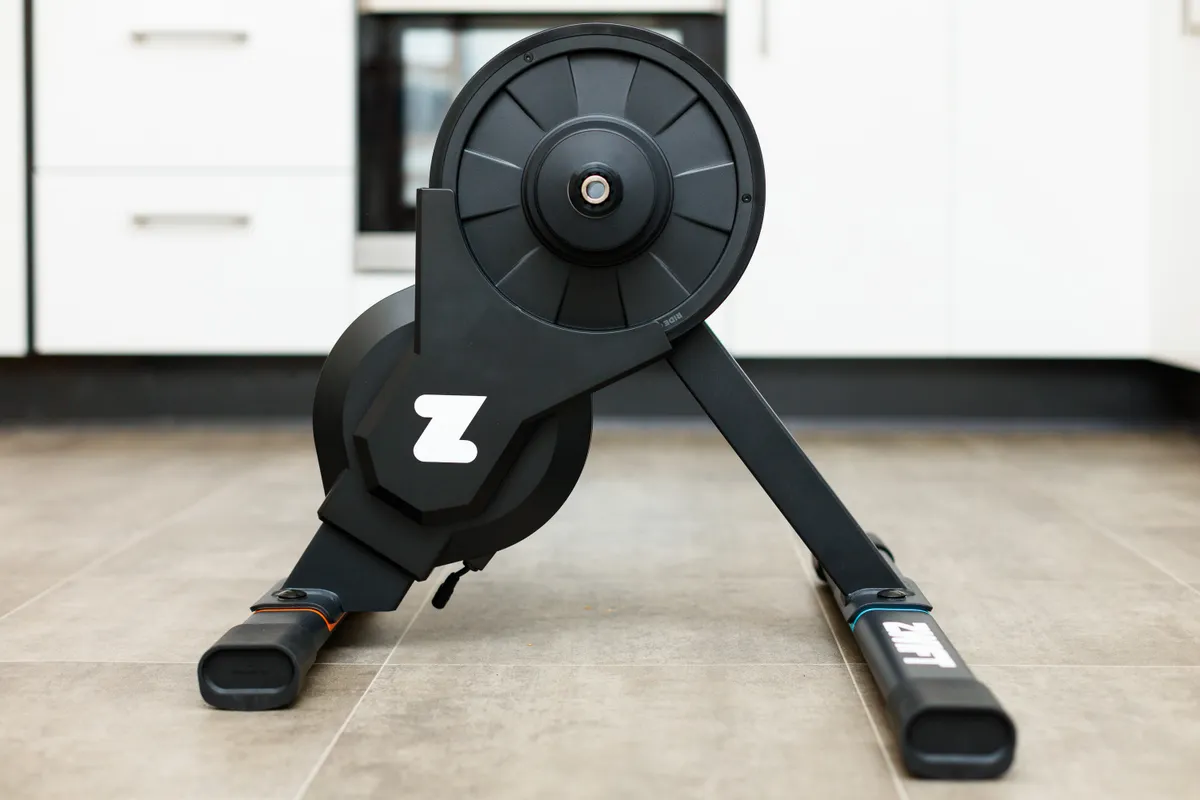
The term 'smart trainer' refers to a turbo trainer that can interact with training software such as Zwift, TrainerRoad or Rouvy.
These indoor cycling apps can control the resistance of the trainer, allowing you to recreate rides and race others from the comfort of your home.
Most smart trainers work with both ANT+ and Bluetooth protocols. ANT+ is the most commonly used wireless protocol for fitness products such as heart-rate monitors and power meters. Bluetooth should be familiar if you use smartphones, tablets and computers.
Besides automatic resistance control, smart trainers also include a power meter, enabling you to work out exactly how hard you’re riding.
What is an indoor bike?
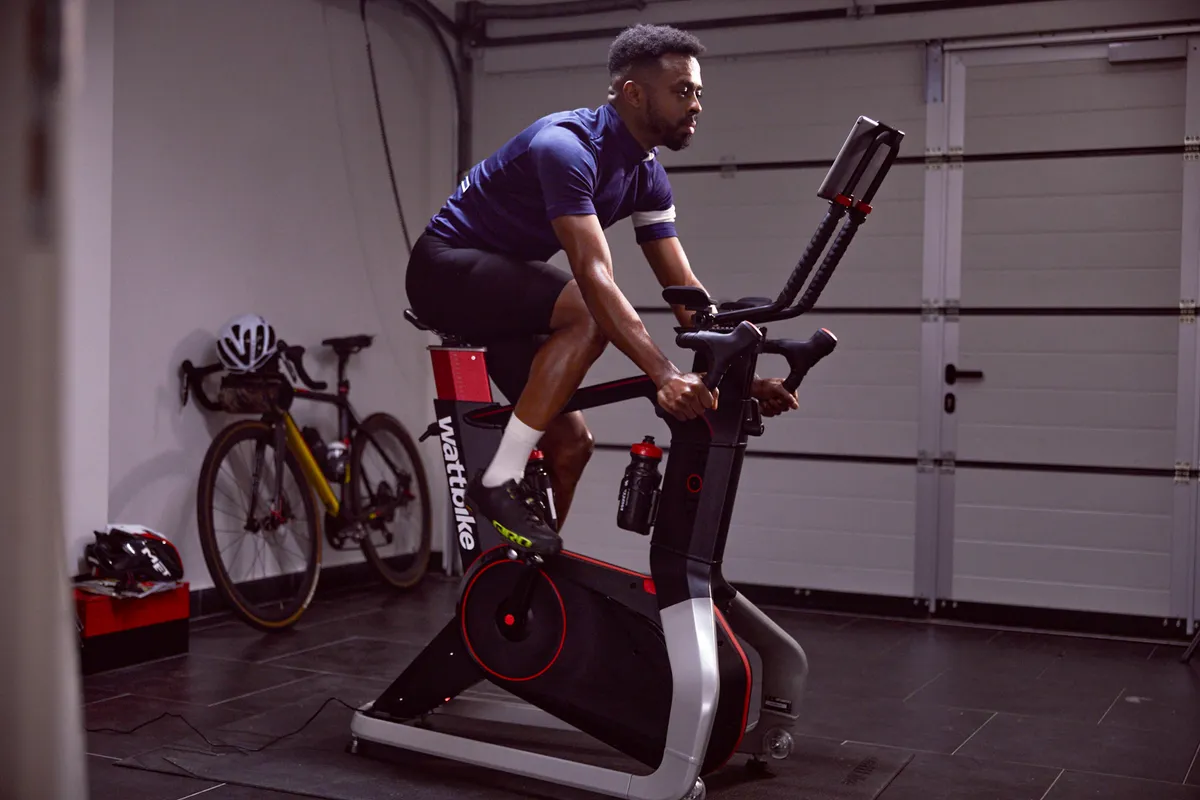
The best indoor bikes are nothing like the contraptions of old that you might have come across in a skip or at the back of a thrift shop.
Sharing many of the same high-tech features as smart trainers, indoor bikes can now be used in conjunction with virtual cycling platforms. They wrap everything you need up into one neat bundle, in some cases saving you from investing in extra indoor training accessories.
A static trainer also offers a far more stable and hassle-free indoor training experience than any turbo trainer or rollers.
The drawback to indoor exercise bikes is that they tend to be bulky and heavy. You’ll likely need a dedicated space at home for your indoor bike, because you won’t be able to pack it away like a smart trainer.
The price can also be off-putting, but for dedicated racers who want the very best indoor cycling experience, indoor bikes are hard to beat.
Wattbike is probably the best-known brand that is dedicated to static bikes, though Tacx, Wahoo, SRM and others have brought options to market.
Peloton Bikes are another popular choice. They are a turnkey solution to riding indoors, with Peloton providing a range of exercise workshops that are more like gym classes than the virtual racing found on Zwift.
